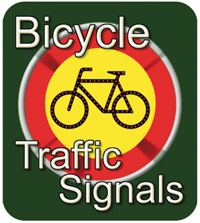|
||
EMPLOYMENT, WORKPLACE & PROFESSIONAL NEWSSOCIAL SECURITY HAS CHANGED ITS NUMBERING SYSTEM The Social Security Administration has taken a step that makes it more difficult for thieves to guess your card number. Since 1972, the first three digits were related to the ZIP code in the mailing address provided on the application for a Social Security card. Generally, numbers were assigned beginning in the northeast and moving westward. So people on the East Coast had the lowest numbers and those on the West Coast had the highest numbers. That's no longer the case. The first three digits are now randomly assigned. Existing Social Security numbers have not been changed.
Proposed limits on carbon dioxide output will speed the ongoing switch by utilities to natural gas. Even without the limits, use of natural gas will increase. There's good news for coal miners. Coal exports are sure to keep growing through the rest of the decade because of increasing demands in Europe and Asia, says Kiplinger's forecast for management decisions.
Moving money from your paycheck to your 401(k) plan is one of the best investment moves you can make. First, your investment is made on a pre-tax basis. That means it will grow faster. Second, you'll get free money from the company. Your investment will be matched by a certain percentage of your contribution. Here's the basic idea of pre-tax investing. After you retire and begin taking money from the plan you'll pay far less income tax on it than you would have paid when you earned the money. How much you decide to put into the plan is up to you. You can change that amount, up or down, whenever you want to. With payroll deductions it's easy. Your retirement money grows at a compound rate. When interest is added the balance grows to a new sum. When interest is calculated next it will be calculated on that sum. The more frequently interest is added to the principal the faster the principal grows and the higher the compound interest will be. In 2013, you can contribute $17,500 to your 401(k), up $500 from 2012. If you are 50 or older, you can add another $5,000 to your contributions. Only about 5 percent of plan participants can afford to make the maximum contribution, but an increase of any amount will help to secure your retirement.
While most retirement programs have an age limit after which you can no longer contribute, you can add to a Roth IRA for the rest of your life. It's a good place to stash cash whether you will use it during your own retirement or leave it to your heirs. There is only one catch to it. You or your spouse must have earned income in order to contribute to a Roth IRA. It can come from a job, self employment, tips, commissions, alimony or spousal support. It can't be income from investments or a trust. If you are retired but have a part time job, you can use that income as the basis for your Roth contribution. Eligible individuals can contribute $5,500 for 2013. Plus, you can make a $1,000 catch up contribution if you are 50 or older. That means at age 50 or more, you can contribute $6,500 in 2013, if you have at least that much income. You can't contribute more than you earned which means that if you earned just $2,500, you can contribute only that amount. Spouses can combine their earned income, so if you made money and your spouse did not you can still contribute on his or her behalf if you file a joint tax return. If you open a Roth IRA and later can't make contributions you don't have to close the account or convert it. You can continue to let your savings grow for tax free income in retirement. If you can make Roth contributions at some point in the future you can add to your existing account. Do you have too much income? For single filers your ability to contribute to a ROTH IRA is phased out as your adjusted income reaches the range of $112,000 to $127,000. For married filing jointly, the ability to contribute to a Roth IRA is phased out as your adjusted income reaches the range of $178,000 to $188,000.
It is predicted that, at some point, there will be a national standard for bike signals. In the meantime, cities with complex intersections are moving forward. Chicago plans bicycle specific signals. Atlanta's first signals were installed recently, and Salem joined four other Oregon cities that have bike signals. Cyclists say signals make it a lot easier to get through an intersection. They help vehicle drivers be more aware of bikes, and are helpful for both motorists and bicyclists.
© 2013 TLC Magazine Online, Inc. |



